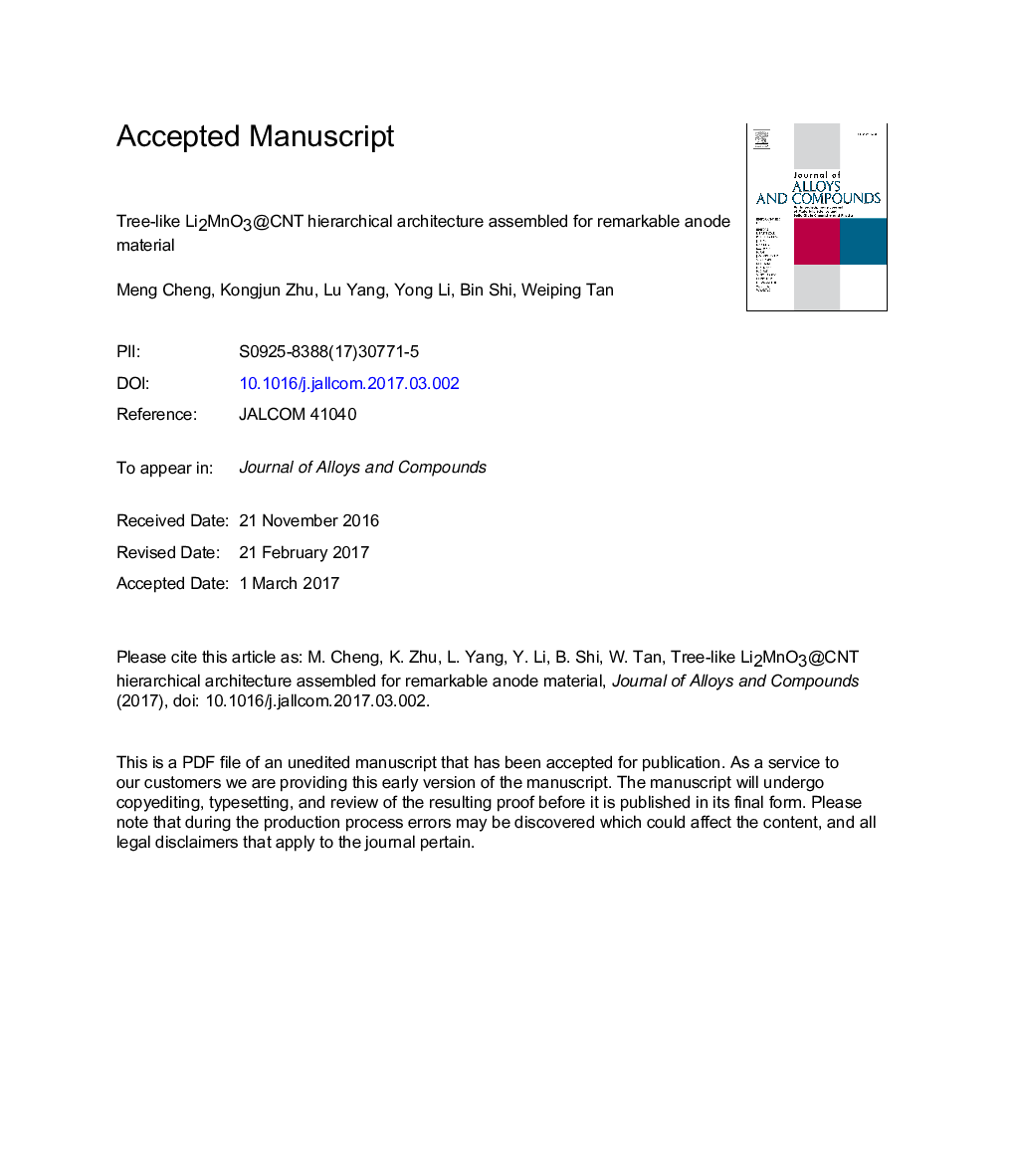| Article ID | Journal | Published Year | Pages | File Type |
|---|---|---|---|---|
| 5459552 | Journal of Alloys and Compounds | 2017 | 17 Pages |
Abstract
The increasing demand for high-energy-density portable electronics and electric vehicles is sparking an intensive research interest in lithium-ion batteries. Transition metal oxides/carbonaceous matrix hybrids have attracted tremendous attention to produce the next-generation lithium-ion batteries (LIBs). This paper initially reports that the tree-like Li2MnO3@carbon nanotube (CNT) hierarchical architecture can achieve the long-life lithium storage performance. Li2MnO3 nanoparticles of the hybrid with lattice Li+, as the anode material for LIBs, exhibits a reversible capacity of over 740Â mAh/g at a current density of 0.5 A/g after 350 cycles, indicative of superior cyclic stability and excellent rate performance. XPS and XRD patterns reveal that LiOH in the anode material, which originates from the conversion reaction, is further discovered to be available and reversible for surface-enhanced lithium storage. Surface-enhanced lithium storage contributes to the over-compensation and increased capacity.
Related Topics
Physical Sciences and Engineering
Materials Science
Metals and Alloys
Authors
Meng Cheng, Kongjun Zhu, Lu Yang, Yong Li, Bin Shi, Weiping Tang,
